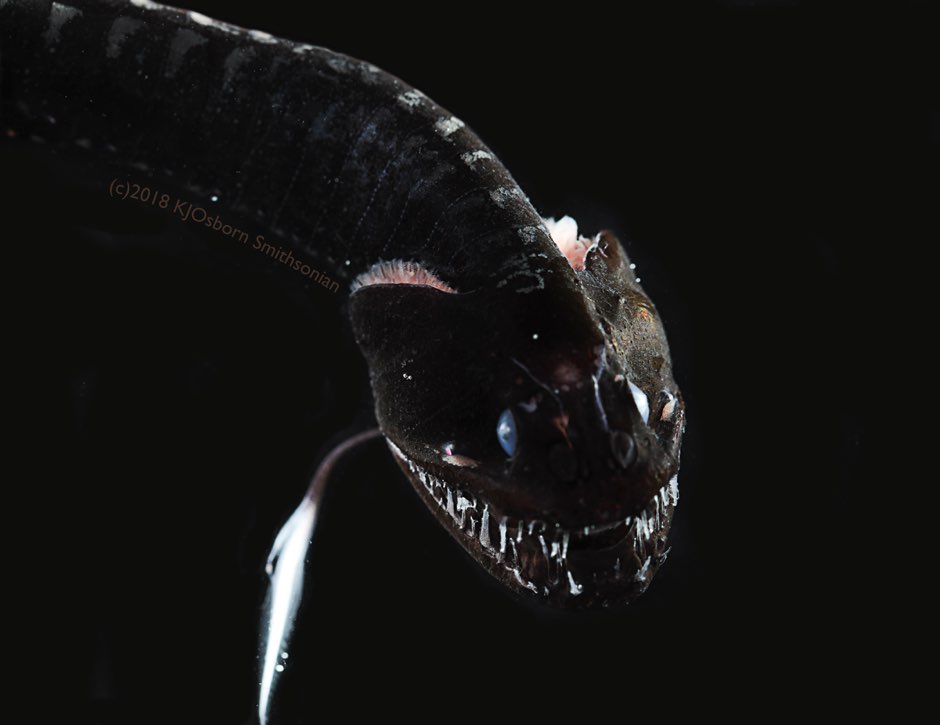You might be able to apply black make-up, dye your hair a dusky tone and drape yourself in black leather, but you’ll never be as goth as some species of deep-sea fish.
A team of scientists from Duke University and the Smithsonian National Museum of Natural History have found that the skin of some deep-sea fish absorbs more than 99.95 per cent of the light that hits them, making them appear ultra-black.
In the dark environment in which they live, where even a tiny bit of reflected light can attract unwanted attention, this intense black colour improves their chances of survival.
Read more about fish:
- A flexible diet is the key for fish adapting to life out of the water
- What if we banned fishing?
- Fish with Black Panther-inspired name one of 71 new species found in 2019
Duke University’s Dr Karen Osborn, who co-led the research, first discovered the incredible properties of the fish when she tried to photograph some of the specimens that she’d brought up from the deep sea.
Despite high-tech equipment, she could not see any detail in the images. “It didn't matter how you set up the camera or lighting – they [the fish] just sucked up all the light,” she said.
The researchers found that the secret to the ultra-black colour is melanin – the same pigment that gives human skin and hair its colour – and its distribution within the fish skin.
The melanin is located inside structures called melanosomes, which are densely packed into cells on the fish skin. Thanks to the shape and arrangement of the melanosomes, any light that reaches a melanosome will be redirected towards another in the cell, to absorb it.

“These pigment-containing structures are packed into the skin cells like a tiny gumball machine, where all of the gumballs are of just the right size and shape to trap light within the machine,” said Alexander Davis, a co-author of the study and doctoral student at Duke University.
So far, the team have found 16 species of fish that use this method to appear ultra-black in the deep sea. As the species are not closely related, it could be a relatively common strategy.
It is thought that engineers could take inspiration from the fish to create ultra-black substances for sensitive optical equipment, which is currently expensive and fiddly to produce.
Reader Q&A: What is the darkest human-made substance?
Asked by: Kate Clegg, Exeter
In 2014, researchers at UK-based Surrey NanoSystems unveiled Vantablack, a coating that absorbs up to 99.96 percent of light that falls onto it.
Vantablack is made up of millions of carbon nanotubes barely 200 atoms across, and it can be used to absorb stray light in the sensitive instruments of satellite observatories. When it is applied to ordinary objects, however, it creates the illusion of making them look totally flat. This is becauseno light reflects off an object coated with Vantablack soit’s impossible for our eyes to make out any three-dimensional features.
You can even buy a watch with a Vantablack dial!
Read more:
